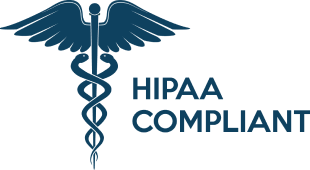From Healthcare to Wellcare: Advancing Population Health Using Mobile Devices
In recent years, the shift towards population health management has brought with it a renewed focus on improving the health outcomes of entire communities and populations, as opposed to just treating individual patients. Payers, including insurance companies and government health programs, are increasingly holding healthcare providers accountable through Value-Based Care (VBC) models. While this shift has the potential to yield numerous benefits, there are also challenges that both providers and patients must navigate in their quest to enhance the health outcomes of populations.
Understanding Population Health
Population health, at its core, is a holistic approach to healthcare that seeks to improve the overall health and wellbeing of a defined group of individuals. It takes into account not only traditional healthcare but also factors like social determinants of health, lifestyle choices, and the broader environment in which people live and work. The ultimate goal is to enhance the health of a population by addressing the root causes of health disparities and illness.
Population Health Challenges for Providers
Reducing gaps between appointments: Due to clinic and staff shortages, many providers find themselves overbooked and still unable to offer timely appointments to their patients. Longer wait times can often lead to late or missed diagnoses, more severe prognoses, reduced patient engagement, and lower patient satisfaction.
Patient Engagement: While traditional healthcare focuses on reactive, episodic care, with patients only visiting doctors when they are sick, population health management requires continuous monitoring and proactive interventions. Providers must find ways to engage with patients between appointments, leveraging technology and remote health monitoring to keep track of their health and wellbeing.
Efficient screenings for large populations: Screening large populations for various health conditions and risk factors is essential for early intervention and prevention. However, conducting screenings for entire communities can be logistically challenging and resource-intensive. Healthcare organizations must adopt innovative technologies and data-driven approaches to identify at-risk individuals efficiently.
Patient satisfaction tied to reimbursement: In Value-Based Care models, patient satisfaction often plays a role in determining reimbursement levels for healthcare providers. This requires providing both high-quality clinical care and seamless patient experiences through digital innovation. This involves efficient appointment scheduling, reduced wait times, and the adoption of digital tools like telemedicine and patient portals, enhancing access to care and empowering patients in managing their health, leading to improved satisfaction and better population health outcomes.
Data interoperability: One of the primary challenges for healthcare providers is the integration and interoperability of data. To effectively manage population health, providers need access to comprehensive data from various sources, including electronic health records (EHRs), and be able to share it with relevant stakeholders. The lack of seamless data sharing can hinder the ability to identify at-risk populations and deliver the right care at the right time.
Population Health Challenges for Patients
Access to care: For many patients, access to healthcare services remains a significant challenge. This can be due to factors like geographic location, inability to take time off work, lack of insurance coverage, or financial barriers. Limited access can prevent individuals from receiving timely preventive care and managing chronic conditions effectively. – transportation, elderly
Health literacy: Health literacy, or the ability to understand and navigate the healthcare system, plays a critical role in population health. Patients with low health literacy may struggle to follow medical recommendations, understand their treatment options, or make informed decisions about their health.
Social determinants of health: Factors such as income, education, housing, and access to healthy food have a profound impact on health outcomes. Patients from disadvantaged backgrounds often face barriers related to these social determinants, making it challenging to achieve and maintain good health.
From Healthcare to Wellcare: Advancing Population Health
The understanding that it is not enough to treat individual patients and their symptoms, but healthcare must address root causes, systemic issues and environmental factors necessitates a shift from healthcare to the concept of “wellcare.” Wellcare, a concept developed by Trustr, is an approach to care that aims to address population health challenges by prioritizing wellness and making healthcare preventative, easily accessible and engaging to patients on a consistent basis. Thanks to developments in technology in recent years, there are many solutions that can help payers, providers and patients change their approach to healthcare.
Trustr and Binah.ai: Empowering Preventative, Easily Accessible, and Efficient Care for Better Health Outcomes
Trustr and Binah.ai’s joint solution aims to support the shift to “wellcare.” Trustr’s platform harnesses the ubiquitous and engaging nature of smartphones and enables patients to access care through a device they already own and use all the time. Through Binah.ai’s technology, the platform enables users to measure their vital signs, blood tests, and mental wellness indicators in just 35 to 60 seconds using their smartphone camera, so that tracking health on a regular basis is easy and engaging. Users can choose to share their health data with providers, and providers can integrate EHRs onto the platform to ensure that health data is stored and shared with the relevant providers and stakeholders for smarter decisions.
Trustr’s platform also enables providers to conduct telehealth calls with virtual waiting rooms. Enabling patients to screen themselves and “visit the doctor” using their smartphones empowers them to stay engaged with their health irrespective of their geographic location and helps to reduce other barriers that might get in the way of a visit to a clinic. Patients can schedule appointments through the app and opt to receive automated reminders to visit the doctor, order medications, or measure their vitals. With patients measuring themselves and seeing the doctor regularly, providers can help ensure that more patients are able to flag health issues early on and prevent devastating health issues and healthcare costs.
The use of mobile devices also enables payers and providers to efficiently reach larger populations with minimal resources. In fact, Trustr set a world record for organizing health checks for 10,000 people with 3 hours using Binah.ai’s health check technology. This technology can also be placed in public kiosks in places like supermarkets or bus stops to enable people worldwide to measure their health regularly and keep track of their numbers.
These are just some of the various ways that Trustr and Binah.ai’s solution is allowing payers and providers to break down systemic barriers to care, make preventative care convenient and accessible to more populations, and help patients stay informed and engaged with their health to ultimately lead to better outcomes.
To learn more about how you can use Trustr and Binah.ai’s joint solution to improve health outcomes for more patients, watch our webinar with Trustr now.

 close
close





